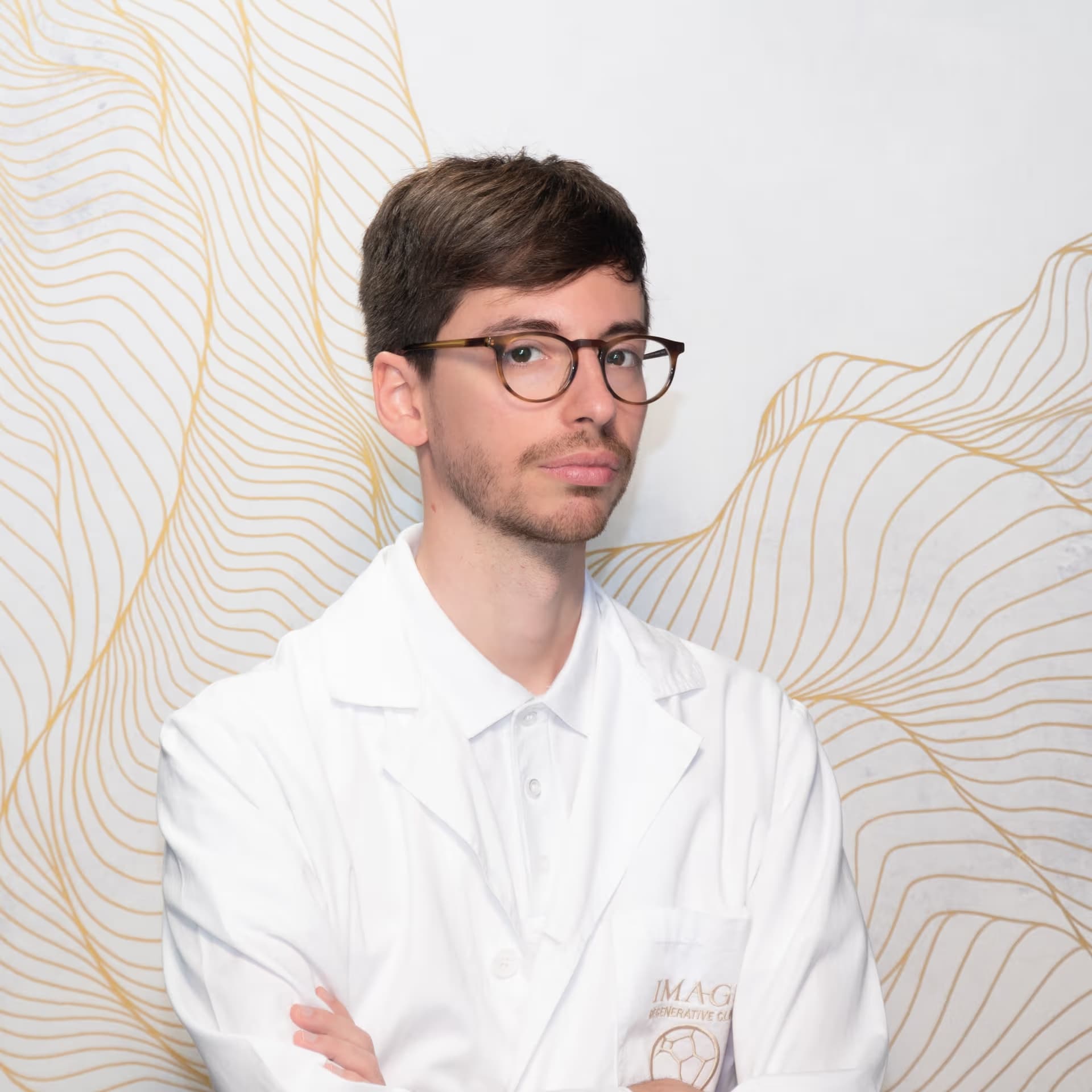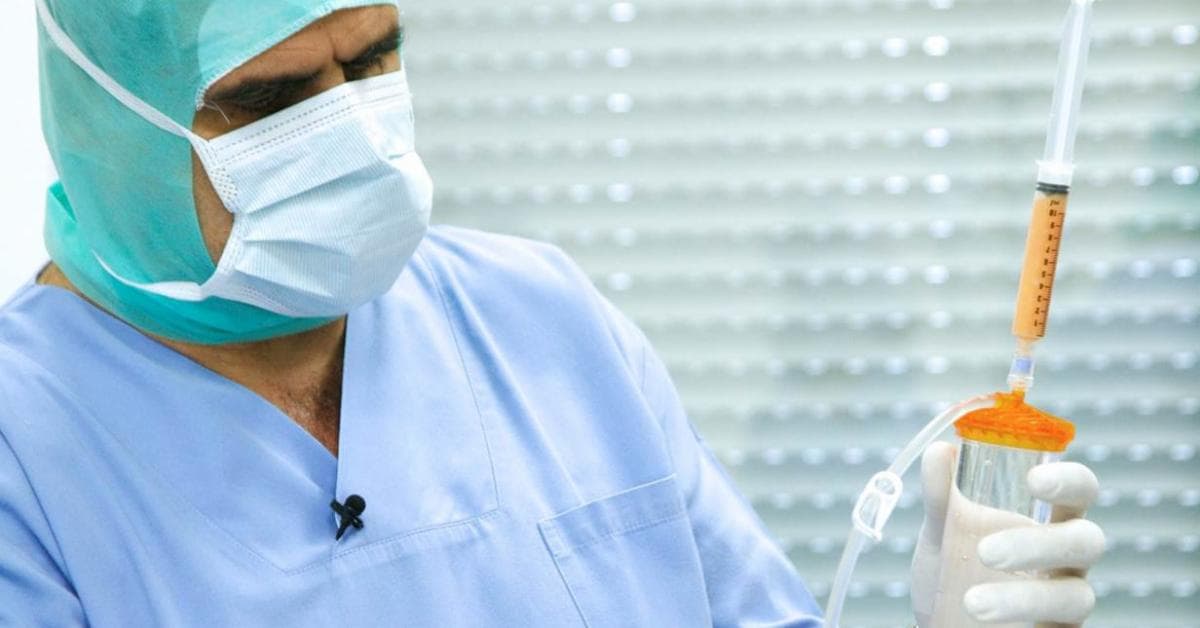
4 min
Facial Treatments for Active Acne: What Really Works
Active acne is a complex condition that requires a rigorous and personalized medical approach. At IMAGE REGENERATIVE, we understand the impact this condition can have on quality of life. For this reason, we have developed advanced protocols that integrate classical dermatology with the most sophisticated innovations in regenerative medicine. Our goal is to treat inflammation, accelerate healing, and prevent scarring outcomes, restoring the skin's natural balance. What is active acne: causes and symptoms Active acne is not simply a pimple, but a chronic inflammatory condition of the pilosebaceous follicle. Its causes are multifactorial: excessive sebum production (oily skin), pore blockage, bacterial proliferation (particularly Cutibacterium acnes ), and hormonal imbalances. This inflammatory process manifests with different lesions: comedones (blackheads and whiteheads), papules (red, inflamed lesions), pustules (with pus), and, in more severe cases, nodules and cysts. Correctly identifying the type of acne, from mild comedonal to nodular-cystic or conglobate, is the fundamental first step in defining an effective therapeutic strategy. Acne diagnosis: the role of regenerative medical clinic Relying on "do-it-yourself" remedies or non-specific aesthetic treatments can worsen inflammation and increase the risk of permanent scarring. Advanced clinical diagnosis is essential. At our institute, the journey begins with an in-depth personalized regenerative analysis . This medical evaluation allows us to precisely analyze skin health, tissue quality, and acne type. Understanding the triggering cause - whether hormonal, bacterial, or lifestyle-related - enables us to structure a tailored therapeutic pathway that, as required by active acne, unfolds in precise phases: reduce inflammation, purify, lighten post-inflammatory marks, and finally, smooth the skin. Traditional vs innovative treatments: a comparison Managing acne requires an arsenal of treatments that can be combined to maximize effectiveness. Chemical Peels Chemical peels are a well-established dermatological treatment for acne. They use acidic solutions (such as salicylic or glycolic acid) to exfoliate the skin's superficial layer, unclog pores, regulate sebum production, and stimulate cell turnover. This helps reduce comedones and improve skin texture. There are also innovative formulations like PRX-T33, a biostimulation that regenerates the skin deeply without causing aggressive exfoliation, ideal for stimulating skin without downtime. Laser Treatments Energy-based technologies, such as laser treatments and intense pulsed light (IPL), offer targeted action. These devices can reduce inflammation, selectively target acne-causing bacteria, and improve redness. For scarring outcomes, fractional lasers (such as Fraxel or CO2) are considered the gold standard, as they create controlled micro-damage that stimulates new collagen production, smoothing "pitted" skin. Healing Creams Topical therapies are fundamental in daily acne management. Creams based on retinoids, benzoyl peroxide, or salicylic acid help prevent pore blockage and reduce inflammation. However, for active acne and scars, creams alone are often not sufficient. They work best when integrated into a medical protocol that prepares the skin to receive them, enhancing their effectiveness and accelerating healing. Regenerative therapies for acne: how do they work? Regenerative medicine has changed the rules in acne treatment. The goal is to stimulate the skin's natural self-healing processes. At IMAGE REGENERATIVE, we integrate various methodologies for synergistic action. Biophotonic Therapy (Kleresca®) For inflammatory acne and rosacea, we use Kleresca®, a biophotonic technology. This non-invasive treatment uses specific LED light and a photoconverter gel to penetrate deeply, activating cellular repair, reducing inflammation, and eliminating bacteria (P. acnes). Targeted Infiltrations (Acne Shots) For more stubborn lesions, such as nodules or inflamed cysts, we intervene with Acne Shots. Inspired by Korean dermatology, these targeted microinjections deliver active ingredients (such as low-dose corticosteroids) directly into the lesion, reducing swelling and redness within 24-48 hours and preventing scar formation. Medical Cleansing and Oxygenation Protocols such as Pure Facial and Intraceutical Oxygen are fundamental. Pure Facial combines regenerative thermoionization and oxygen therapy for deep purifying action. Oxygen therapy (often combined with ozone) has a powerful antibacterial and soothing effect, essential for skin with active acne. Scar Regeneration (Lipogems®) For scarring outcomes, our excellence approach is Lipogems® Beauty. This technology, patented by Prof. Carlo Tremolada, uses the regenerative potential of micro-fragmented autologous adipose tissue. Mesenchymal cells stimulate the production of new collagen and elastin, regenerating damaged skin from within and naturally and lastingly improving texture. Therapeutic Approach Main Objective Indicated For Technology Used Topical Therapies Daily control, prevention Mild acne, maintenance Salicylic Acid, Retinoids Chemical Peels Exfoliation, renewal, marks Comedonal acne, hyperpigmentation Acids (Glycolic, Salicylic, PRX-T33) Biophotonic Therapies Anti-inflammatory, antibacterial Active acne, Rosacea Kleresca® (LED Light + Gel) Targeted Injections Rapid inflammation reduction Nodules, cysts, inflamed acne Acne Shots (Corticosteroids) Regenerative Therapies Scar repair, texture Scarring outcomes, damaged skin Lipogems®, Fractional Lasers The IMAGE REGENERATIVE Approach: a multi-phase pathway Our experience in treating active acne is based on a fundamental premise: there is no single cure, but a personalized pathway. Therapeutic success is founded on the correct sequence of treatments. Phase 1: Reducing Inflammation The urgency is to calm the skin. In this phase, we use soothing and anti-inflammatory therapies such as Kleresca® or Acne Shots to control redness and pain, blocking the lesion's evolution. Phase 2: Purification and Rebalancing Once acute inflammation is managed, we work on the cause. Treatments such as Pure Facial and proper medical skincare rebalance sebum production and purify pores. Phase 3: Correcting Marks (Hyperpigmentation) Inflammation often leaves dark marks (post-inflammatory hyperpigmentation). Here we intervene with lightening peels or specific lasers (e.g., Pulsed Light) to even out skin tone. Phase 4: Scar Regeneration The final phase addresses permanent outcomes. Fractional lasers and tissue regeneration with Lipogems® Beauty work to smooth the skin and repair collagen damage. Post-treatment advice: maintaining healthy skin Maintaining achieved results is a daily commitment. Home care is crucial. After treatments such as peels or lasers, using SPF 50+ sun protection is mandatory to prevent mark formation. It is essential to use gentle cleansers and non-comedogenic products, as recommended by our specialists. We also advise following a balanced diet, limiting high glycemic index foods and dairy, which can contribute to systemic inflammation. Frequently Asked Questions (FAQ) What is the most effective treatment for acne? The most effective treatment for acne is a personalized protocol established by a specialist physician. There is no single solution valid for everyone. Effectiveness depends on correct diagnosis of the acne type (e.g., hormonal, bacterial, comedonal) and integration of targeted treatments such as anti-inflammatory therapies, peels, and regenerative technologies combined with proper home routine. What to use on active acne? On active acne it is essential to use treatments with anti-inflammatory and antibacterial action. You must avoid squeezing or touching lesions to not worsen infection and cause scarring. Medical treatments such as Kleresca®, Acne Shots, or Oxygen Ozone Therapy are specifically indicated to rapidly reduce redness and inflammation of active lesions. What are the facial treatments for acne? There are various advanced medical and aesthetic treatments. Chemical peels (such as salicylic acid) help exfoliate and purify. Technologies such as Kleresca® (biophotonic) combat inflammation and bacteria. Treatments such as Pure Facial or HydraFacial offer deep cleansing and sebum rebalancing. For scarring outcomes, fractional lasers and regenerative medicine such as Lipogems® are used. What do dermatologists recommend for acne? Dermatologists advise not to underestimate acne and to consult a specialist for proper diagnosis. The most recommended approach is almost always combined: topical therapy (specific creams), proper daily cleansing, a balanced diet, and a cycle of outpatient treatments (such as peels, lasers, or regenerative therapies) to manage inflammation and prevent scar formation.





.jpg&w=3840&q=75)



-2.jpg&w=3840&q=75)





















